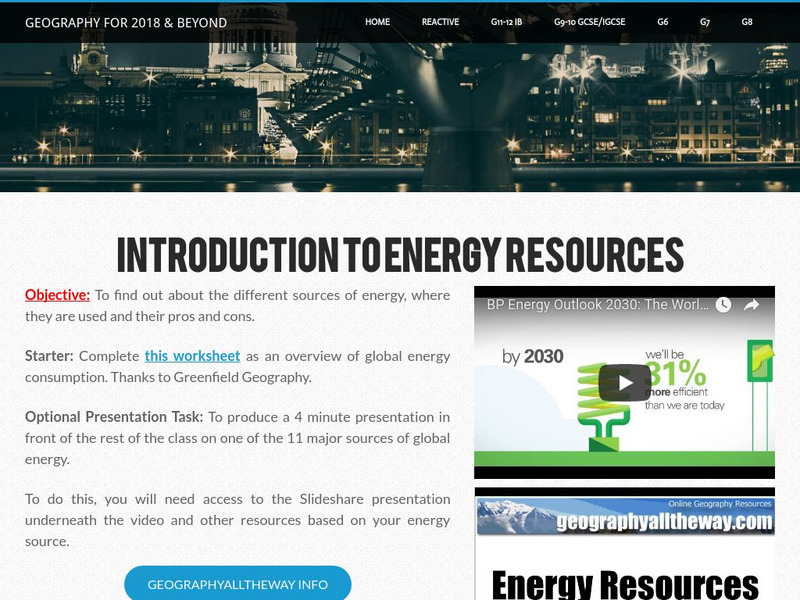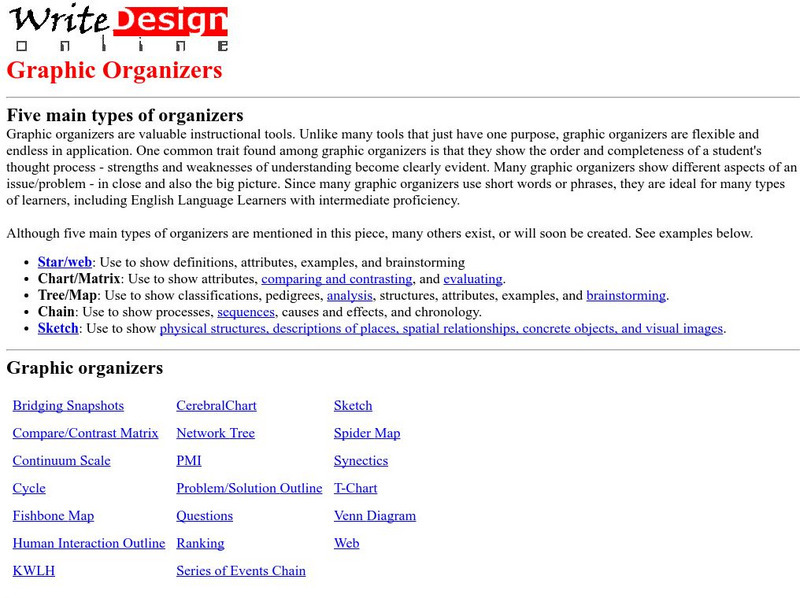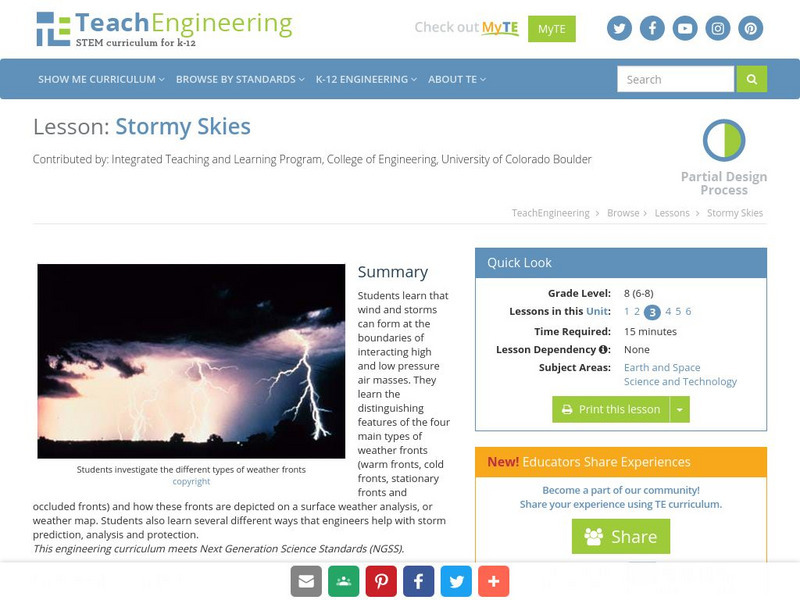National Endowment for the Humanities
Neh: Edsit Ement: Mapping Our Worlds
In this instructional activity, introduce your learners to the world of maps and discover a world of information online. Students learn how to identify different types of maps, comparing maps to the rooms of a house.
Geographypods
Geographypods: Theme 3: Economic Development: Energy Systems
This learning module looks at human-made systems of energy, covering different types of energy and power stations. Includes handouts, slideshows, maps, activities, photographs, an interactive animation, and videos.
Other
Five Main Types of Graphic Organizers
This site provides information on how to use each graphic organizer. There are also 21 different graphic organizers for you to see.
TeachEngineering
Teach Engineering: Build an Anemometer
Students create their own anemometers which are instruments for measuring wind speed. They see how an anemometer measures wind speed by taking measurements at various school locations. They also learn about different types of...
E-learning for Kids
E Learning for Kids: Math: Pizza (Italian) Restaurant: Angles I
In this interactive website, students practice various math skills such as identifying different types of angles, use the degree symbol, estimate and measure angles, and construct angles.
San Diego Zoo Global
San Diego Zoo: Peafowl
A great site to find out all about peacocks and peahens. Find a map to see where their natural home is, read about their habits, see pictures of different kinds of peafowl, and hear their call. From the San Diego Zoo.
Michigan Technological University
Michigan Tech University: Where Do Earthquakes Happen?
An informative site that explains how and where earthquakes occur and the different types of faults. Contains maps and charts of fault lines, plate edges, and the continental plates. There are other links within the site of related...
TeachEngineering
Teach Engineering: Stormy Skies
Students learn that wind and storms can form at the boundaries of interacting high and low pressure air masses. They learn the distinguishing features of the four main types of weather fronts (warm fronts, cold fronts, stationary fronts...







